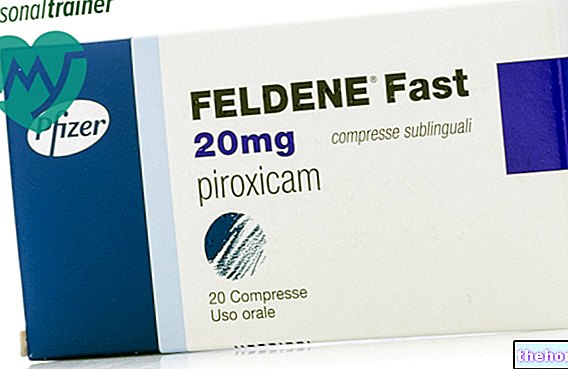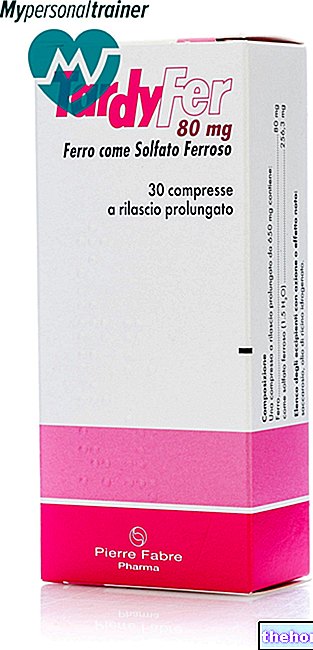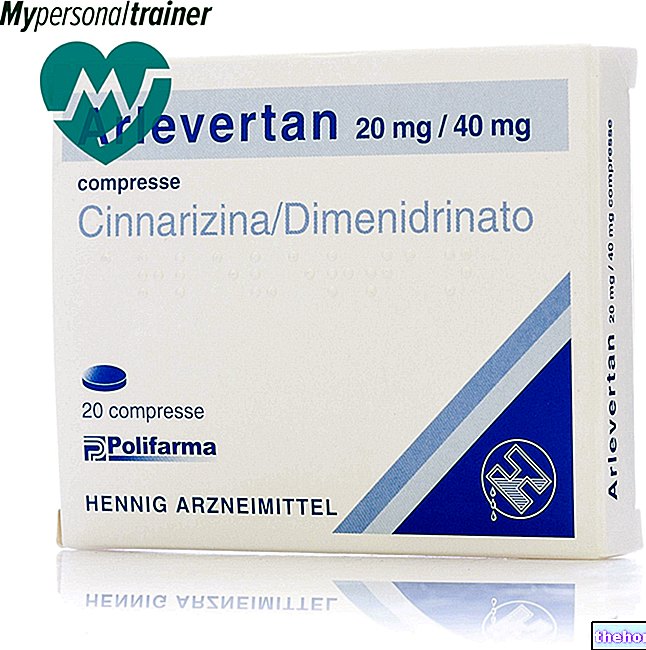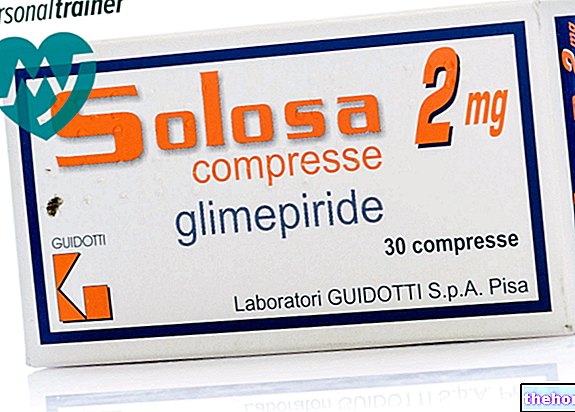Active ingredients: Betamethasone (Betamethasone dipropionate)
Betamethasone dipropionate Sandoz 50mg / 100g cream
Why is Betamethasone dipropionate used - Generic drug? What is it for?
What is Betamethasone dipropionate Sandoz and what it is used for
Betamethasone dipropionate Sandoz is a skin cream that contains the active ingredient betamethasone dipropionate belonging to a group of medicines called corticosteroids, used to treat inflammation and allergies.
Betamethasone dipropionate Sandoz is indicated for skin inflammations and in particular for those localized in areas where the skin is thinner and more delicate:
- skin inflammations from external causes such as contact eczema caused by detergents or cosmetics or directly related to the working environment (professional irritations);
- inflammatory reactions of the skin (eczema) of various types (constitutional, from stasis);
- seborrheic eczema, an inflammation of the skin that mainly affects areas rich in sebaceous glands such as the scalp, ear and face, in both adults and children (cradle cap);
- irritation with blistering of the hands and feet (dyshidrosis);
- inflammation of the skin caused by generalized itching in the anus (anal) and genitals;
- inflammation of the skin caused by a continuous friction of two parts of the body (intertrigo);
- sunburn, inflammatory skin reaction caused by exposure to sunlight;
- irritations caused by allergies to plants, chemicals or insect bites;
- psoriasis, a chronic inflammatory skin disease involving the immune system and other inflammatory skin diseases (Vidal-Brocq's lichen simplex, lichen ruber planus).
Contraindications When Betamethasone dipropionate should not be used - Generic drug
Do not use Betamethasone dipropionate Sandoz
- if you are allergic to the active substance or any of the other ingredients of this medicine (listed in section 6);
- if you have a type of skin infection called cutaneous tuberculosis or other untreated infections;
- if you have a "skin infection caused by viruses (herpes simplex, chicken pox);
- if you have a 'skin infection caused by fungi or bacteria;
- if you suffer from acne rosacea, a skin disease characterized by irritation and redness on the face;
- if you suffer from acne vulgaris, an inflammation of the skin with the appearance of pimples;
- if you have "inflammation around the mouth (perioral dermatitis);
- to treat itching without inflammation;
- itching of the genitals and anus (perianal and genital itching);
- if you have skin lesions (skin ulcers) or lesions infected with fungi or bacteria;
- if the person who is to use this medicine is a child under 1 year of age, also in case of dermatitis and diaper rash.
Do not apply the occlusive dressing to infected skin or skin that has exudative lesions
Precautions for use What you need to know before taking Betamethasone dipropionate - Generic drug
Talk to your doctor or pharmacist before using Betamethasone dipropionate Sandoz.
Use this medicine with caution and tell your doctor in the following cases:
- if you are elderly, you should use the lowest possible dose in this case;
- if you have liver or kidney problems (kidney or liver failure), in this case you should use the lowest possible dose;
- if you need to apply the medicine using an occlusive dressing;
- if you have a skin disease called psoriasis;
- if you need to apply the cream to your face or eyelids, to avoid contact with your eyes.
Avoid treatment for long periods and with high doses, as absorption through the skin (systemic absorption) may occur. This is even more likely to occur if the cream is applied under an occlusive (non-breathable) bandage or baby's diaper, or if you apply the medicine to skin with lesions or in areas where the skin is thin such as the face. If you are using the medicine to treat dermatitis near ulcers, you may develop hypersensitivity reactions and local infections more frequently.
Stop the treatment and tell your doctor if you experience an "irritation or allergic reaction (sensitization) following" use of this medicine, especially for prolonged periods. Prolonged and repeated use can make you more prone to developing bacterial, viral or fungal infections of the skin. If you have skin infections, use this medicine together with another anti-fungal (antifungal) or bacterial (antibacterial) medicine. you notice improvements, talk to your doctor who will tell you to stop the treatment and will give you appropriate therapy.
To avoid the onset of side effects caused by an excess of cortisone it is good practice to use the lowest dose necessary to control the symptoms of the disease and for the shortest possible time. body (Cushing's syndrome, reversible suppression of the hypothalamus-pituitary adrenal axis) contact your doctor who will tell you to gradually stop using the medicine or prescribe a less potent corticosteroid.
Interactions Which drugs or foods can modify the effect of Betamethasone dipropionate - Generic drug
Other medicines and Betamethasone dipropionate Sandoz
Tell your doctor or pharmacist if you are taking, have recently taken or might take any other medicines.
Use Betamethasone Dipropionate Sandoz with caution and tell your doctor if you are using certain medicines that modify the metabolism of betamethasone such as itraconazole, a medicine used for fungal infections or ritonavir, used to treat HIV.
Warnings It is important to know that:
Betamethasone dipropionate Sandoz should not be applied to the eyes.
Children
Only give the medicine to children when clearly needed, and under close medical supervision, because it may increase the risk of side effects due to greater absorption of the active ingredient, especially in newborns (see section 4 "Possible side effects"). The use of the medicine in children should not exceed 5 days of treatment, using the minimum amount and avoiding the application of an occlusive bandage, this also includes the use of diapers in newborns.
Pregnancy and breastfeeding
If you are pregnant or breast-feeding, think you may be pregnant or are planning to have a baby, ask your doctor or pharmacist for advice before using this medicine. If you are pregnant or breast-feeding, use this medicine only when clearly needed and under the direct supervision of your doctor.
Driving and using machines
This medicine does not affect the ability to drive and use machines.
Betamethasone dipropionate Sandoz contains cetostearyl alcohol, parahydroxybenzoates and propylene glycol
This medicinal product contains cetostearyl alcohol which may cause local skin reactions (e.g. contact dermatitis).
This medicinal product contains methyl parahydroxybenzoate and propyl parahydroxybenzoate which may cause allergic reactions (including delayed).
This medicine contains propylene glycol which may cause skin irritation.
Dose, Method and Time of Administration How to use Betamethasone dipropionate - Generic drug: Posology
How to use Betamethasone dipropionate Sandoz
Always use this medicine exactly as your doctor or pharmacist has told you. If you are unsure, ask your doctor or pharmacist.
Betamethasone dipropionate Sandoz should NOT be applied to the eyes.
Apply the cream 1 or 2 times a day on the affected area and massage gently to aid absorption.
Overdose What to do if you have taken an overdose of Betamethasone dipropionate - Generic drug
If you use more Betamethasone dipropionate Sandoz than you should
In case of accidental ingestion / intake of Betamethasone dipropionate Sandoz contact your doctor immediately or go to the nearest hospital.
Excessive or prolonged use of this medicine can cause side effects due to corticosteroids such as: malfunction of the adrenal glands and increased levels of steroids in the body (hyperadrenalism). These symptoms may disappear after stopping treatment, reducing the frequency of application or replacing it with another similar medicine.
If you have any further questions on the use of this medicine, ask your doctor or pharmacist
Side Effects What are the side effects of Betamethasone dipropionate - Generic drug
Like all medicines, this medicine can cause side effects, although not everybody gets them.
Prolonged use and / or high doses can induce an excess syndrome that manifests itself with the following symptoms:
- increased blood pressure (arterial hypertension);
- loss of muscle strength (asthenia, adynamia);
- altered heart beat (heart rhythm disturbances);
- decreased blood potassium levels (hypokalaemia) and increased blood pH (metabolic alkalosis).
The following side effects may occur:
Common (may affect up to 1 in 10 people):
- burning and pain of the skin;
- itch.
Very rare (may affect up to 1 in 10,000 people):
- allergic reactions;
- infections that occur following a weakening of the immune defenses (opportunistic infections);
- thinning of the skin (atrophy) and stretch marks (striae), dry skin;
- dilation of superficial capillaries (telangiectasia) and changes in skin color;
- increased hair growth (hypertrichosis);
- skin irritations (allergic contact dermatitis / dermatitis, erythema, rash, urticaria);
- inflammation of the skin with pustular formation (pustular psoriasis)
- wrinkling of the skin
- worsening of symptoms already present;
- irritation and pain in the area of application;
- increase in the amount of cortisol in the blood, with consequent inhibition of its release system by the adrenal gland (depression of the hypothalamic-pituitary-adrenal axis) which manifests itself with characteristic symptoms such as: obesity in the central part of the body and face to the moon ( Cushing's syndrome), growth retardation in children, bone problems (osteoporosis), eye disease (glaucoma, cataract), increased blood and urine sugar levels (hyperglycaemia / glucosuria), increased blood pressure ( hypertension), hair loss (alopecia), weight gain, brittle hair (tricorexis). These effects are more frequent in children and following prolonged use or on large areas or following the application of a non-transpiring bandage (occlusive bandage) or diaper.
Not known (frequency cannot be estimated from the available data):
- redness, swelling (edema), peeling;
- itching with signs of hypersensitivity to the product;
- acne-like inflammation of the skin (acneiform eruptions);
- fragility of blood vessels, red spots caused by rupture of blood vessels (purpura), which occur more in the face after prolonged treatments;
- skin irritation and pustular formations (rebound pustular dermatitis) which occur upon discontinuation of treatment.
Reporting of side effects
If you get any side effects, talk to your doctor or pharmacist. This includes any possible side effects not listed in this leaflet. You can also report side effects directly via the national reporting system at www.agenziafarmaco.it/it/responsabili. By reporting side effects, you can help provide more information on the safety of this medicine.
Expiry and Retention
Keep this medicine out of the sight and reach of children.
Do not use this medicine after the expiry date which is stated on the package after "EXP".The expiry date refers to the last day of that month.
Store in the original package to protect the medicine from light.
Do not throw any medicines via wastewater or household waste. Ask your pharmacist how to throw away medicines you no longer use. This will help protect the environment.
Source Package Leaflet: AIFA (Italian Medicines Agency). Content published in January 2016. The information present may not be up-to-date.
To have access to the most up-to-date version, it is advisable to access the AIFA (Italian Medicines Agency) website. Disclaimer and useful information.
01.0 NAME OF THE MEDICINAL PRODUCT
BETAMETHASONE DIPROPIONATE SANDOZ 0.05% CREAM
02.0 QUALITATIVE AND QUANTITATIVE COMPOSITION
100 g of cream contain
Active principle: Betamethasone dipropionate 0.05 g
Excipients with known effects: cetostearyl alcohol, methyl parahydroxybenzoate and propyl parahydroxybenzoate
For the full list of excipients, see section 6.1.
03.0 PHARMACEUTICAL FORM
Cream
04.0 CLINICAL INFORMATION
04.1 Therapeutic indications
Dermatosis sensitive to corticosteroids and in particular the forms localized in the sites with thinner and more delicate skin:
- Contact eczema (from detergents, cosmetics or of a professional nature).
- Constitutional eczema.
- Seborrheic eczema of adults and infants (cradle cap).
- Stasis eczema.
- Dyshidrosis.
- Generalized itching and anus genitals.
- Intertriges.
- Sunburn.
- Primary irritative forms (from vegetables, from chemicals, from insect bites).
- Psoriasis and other deep inflammatory dermatoses such as Vidal-Brocq's lichen simplex and lichen ruber planus.
04.2 Posology and method of administration
Apply the cream 1-2 times a day in sufficient quantity to cover the affected area and massage gently until completely absorbed.
04.3 Contraindications
Hypersensitivity to the active substance or to any of the excipients, listed in section 6.1.
Betamethasone dipropionate is contraindicated in children under the age of 1 year.
The following conditions should not be treated with betamethasone dipropionate:
- Untreated skin infections.
- Tuberculous and viral infections of the treated skin (herpes, chicken pox, etc.).
- Acne rosacea.
- Acne vulgaris.
- Perioral dermatitis.
- Itching without inflammation.
- Perianal and genital itching.
- Skin ulcers.
It is contraindicated in the treatment of infected primary skin lesions caused by fungal or bacterial infections; primary or secondary infections caused by yeasts.
It is contraindicated in the treatment of dermatoses in children under 1 year of age including dermatitis and diaper rashes.
Occlusive dressing is contraindicated in exudative lesions and skin infections.
The product is not for ophthalmic use.
04.4 Special warnings and appropriate precautions for use
Betamethasone dipropionate should be used with caution in patients with a history of local hypersensitivity to corticosteroids or to any of the excipients of the drug. Local hypersensitivity reactions (see section 4.8 Undesirable Effects) may resemble symptoms of the disease being treated.
In some subjects, due to increased systemic absorption of topical steroids, manifestations of hypercortisolism (Cushing's syndrome) and reversible suppression of the hypothalamic-pituitary-adrenal axis (HPA), leading to glucocorticoid insufficiency, may occur.
If any of the above effects are observed, the application of the drug should be gradually reduced by decreasing the frequency of applications or by replacing it with a less potent corticosteroid.
Abrupt discontinuation of treatment may lead to glucocorticosteroid insufficiency (see section 4.8 Undesirable Effects).
The risk factors for increased systemic effects are:
- Topical steroid potency and formulation
- Duration of exposure
- Application on a large surface area
- Use on occluded areas of skin for example on intertriginous areas or under occlusive dressing (in children the diaper can act as an occlusive dressing)
- Increased hydration of the stratum corneum
- Use on thin skin areas such as the face
- Use on skin that is not intact or in other conditions where the skin barrier may be damaged
- Compared to adults, children can absorb proportionally more topical corticosteroids and thus be more susceptible to systemic side effects. This is due to the fact that children have an immature skin barrier and a higher surface area to body weight ratio than adults.
Children
Children are much more likely to develop local and systemic side effects typical of topical corticosteroids and children generally require shorter and less potent corticosteroid treatments than adults.
Betamethasone should be used with caution to ensure application of the minimum amount that gives therapeutic benefit.
The use of the product in children should not exceed 5 days of treatment and occlusive dressing should not be used.
As with other topical corticosteroids, prolonged use of high doses or treatment of large areas may cause sufficient systemic absorption to induce suppression of the hypothalamic-pituitary-adrenal axis.
This effect is more likely to occur in infants and children and if occlusive dressings are used. In infants, the diaper can act as an occlusive dressing.
In early childhood use only in case of real need, under the direct supervision of the doctor.
Children can absorb proportionally higher doses of corticosteroid than adults, making them more sensitive to systemic effects.
In infants and children under 12 years, continuous, long-term therapy with topical corticosteroids should be avoided where possible, as suppression of adrenal activity is more likely, with or without clinical signs of hypercortisolism. , even without the use of the occlusive dressing (see sections 4.8 Undesirable Effects and 4.9 Overdose).
Senior citizens
Clinical studies have revealed no differences in response between elderly and younger patients. Decreased hepatic or renal function, which is very common in the elderly, may lead to a delay in elimination of the drug, in case of systemic absorption. Therefore, the minimum quantity should be used for the shortest time required to obtain the desired clinical benefit.
Population with renal / hepatic insufficiency
In case of systemic absorption (when the application is extended to a large body surface for a prolonged period) the metabolism and elimination of the drug may be delayed, thus increasing the risk of systemic toxicity. Therefore the minimum quantity should be used for the shortest time required to obtain the desired clinical benefit.
Risk of infection in case of occlusion
Hot humid conditions in skin folds or those caused by occlusive dressing promote bacterial infections. If an occlusive dressing is used, the skin surface must be thoroughly cleansed before each renewal of the dressing.
Psoriasis
Topical corticosteroids should not be used in diffuse plaque psoriasis and can be dangerous in other varieties of the disease for various reasons, including rebound relapse, the development of tolerance, the risk of generalized pustular psoriasis, and the development of local or systemic toxicity. due to impaired skin barrier function. It is important to monitor the patient closely during psoriasis treatment.
Application on the face
Prolonged application to the face is not recommended as this area of the body is more susceptible to atrophic changes than other skin areas. This should be considered when treating psoriasis, discoid lupus erythematosus and severe eczema.
The application of the product on the face should not exceed 5 days of treatment and occlusive dressing should not be used.
Application on the eyelids
If the drug is applied to the eyelids, extreme caution must be used to ensure that the drug does not get into the eyes, because prolonged exposure can cause cataracts, glaucoma, eyelid ptosis, rebound effect.
Adequate antimicrobial therapy should be employed if the inflammatory lesions being treated become infected. Any spread of infection requires discontinuation of topical corticosteroid therapy. Systemic chemotherapy is required if bacterial infection persists.
Superinfections
In the case of superinfection of inflammatory lesions, appropriate antimicrobial therapy is required. If infection spreads, topical corticosteroid therapy should be discontinued and appropriate antibacterial therapy administered.
Chronic leg ulcers
In some cases, topical corticosteroids are used to treat dermatitis near chronic leg ulcers. However, this use may be associated with a higher frequency of local hypersensitivity reactions and an increased risk of local infections.
If concomitant antibiotic treatment is inappropriate, only an apparent improvement in the clinical situation may occur due to the anti-inflammatory effect of steroids.
Locally applied corticosteroids can reduce skin resistance to bacteria, viruses and fungi.
Prolonged or repeated use of products for topical use can give rise to sensitization phenomena or the development of bacterial or fungal infections.
Important information about some of the excipients
Betamethasone dipropionate Sandoz contains:
- cetostearyl alcohol: can cause local skin reactions (e.g. contact dermatitis)
- methyl parahydroxybenzoate and propyl parahydroxybenzoate: they can cause allergic reactions (even delayed)
- propylene glycol: can cause skin irritation.
04.5 Interactions with other medicinal products and other forms of interaction
Co-administration of drugs that can inhibit CYP3A4 (eg ritonavir and itraconazole) has been shown to inhibit the metabolism of corticosteroids resulting in increased systemic exposure. The extent to which this interaction is clinically relevant depends on the dose and route of administration of the corticosteroids and the potency of the CYP3A4 inhibitor.
04.6 Pregnancy and breastfeeding
Fertility:
There are no human data to evaluate the effect of topical corticosteroids on fertility.
Pregnancy:
There are limited data on the use of betamethasone in pregnant women.
Topical administration of corticosteroids during pregnancy in laboratory animals may cause abnormalities in fetal development (see section 5.3 Preclinical safety data).
The relevance of this experimental finding to humans has not been established; however, administration of betamethasone dipropionate during pregnancy should only be considered if the expected benefit to the mother outweighs the risk to the fetus, therefore in cases of actual need and under the direct supervision of the physician.The minimum amount should be used for a minimum period of time.
Feeding time:
It has not been established whether the use of topical corticosteroids while breastfeeding is safe.
It is not known whether topical administration of corticosteroids can result in sufficient systemic absorption to produce detectable quantities of the active substance in breast milk.
Topical administration of betamethasone dipropionate during lactation should only be considered if the expected benefit to the mother outweighs the risk to the baby.
If used during breastfeeding, betamethasone dipropionate should not be applied to the breast to avoid accidental ingestion by the baby.
04.7 Effects on ability to drive and use machines
No studies on the ability to drive and use machines have been performed. No adverse effect on these activities is expected given the side effect profile of topical betamethasone.
04.8 Undesirable effects
Side effects are listed below by MedDRA organ, system / system, and frequency. Frequencies are defined as: very common (≥1 / 10), common (≥1 / 100,
Data after marketing
Infections and infestations
Very rare: opportunistic infections
Disorders of the immune system
Very rare: local hypersensitivity.
If signs of hypersensitivity appear, the application must be discontinued immediately.
Endocrine pathologies
Very rare: suppression of the hypothalamus-pituitary-adrenal axis characteristic of Cushingoid (eg face to moon, obesity of the central part of the body), delay in gaining weight / growth retardation of children, osteoporosis, glaucoma, hyperglycemia / glycosuria, cataracts, hypertension, weight gain / obesity, decrease in endogenous cortisol levels, alopecia, tricorrhesis.
As with other topical corticosteroids, prolonged use of high doses or treatment of large areas may cause sufficient systemic absorption to induce suppression of the hypothalamic-pituitary-adrenal axis. This effect is more likely to occur in infants and children and if occlusive dressings are used. In infants, the diaper can act as an occlusive dressing.
Skin and subcutaneous tissue disorders
Common: local skin burning / skin pain, itching.
Very rare: skin thinning * / skin atrophy *, skin wrinkling *, dry skin *, striae *, telangiectasia *, pigmentation changes *, hypertrichosis, allergic contact dermatitis / dermatitis, erythema, rash, urticaria, psoriasis pustular, exacerbation of latent symptoms.
* Skin characteristics secondary to local and / or systemic effects of suppression of the hypothalamus-pituitary-adrenal axis.
Prolonged, high-dose use of highly active corticosteroid preparations may cause local atrophic skin changes such as thinning and striae particularly if occlusive bandages are used or if skin folds are involved.
Prolonged and high-dose use of highly active corticosteroid preparations can cause dilation of superficial capillaries, particularly if occlusive bandages are used or if skin folds are involved.
In very rare cases, corticosteroid treatment of psoriasis (or its withdrawal) is thought to have caused the pustular form of the disease.
General disorders and administration site conditions
Very rare: application site irritation / pain
Preparations of Betamethasone dipropionate Sandoz are usually well tolerated but the application should be discontinued immediately if signs of hypersensitivity appear.
Symptoms may be exacerbated.
This effect typically occurs in infants and children and if occlusive dressings are used. In infants, the diaper can act as an occlusive dressing.
Locally there may be redness, edema, desquamation, itching with signs of hypersensitivity to the product; other effects include acneiform eruptions, telengectasias (especially on the face), vascular fragility, purpura after prolonged treatments (especially on the face), rebound pustular dermatitis which, being sensitive to steroids, become evident only when they are suspended.
Prolonged and / or high dose use can induce an excess syndrome with arterial hypertension, asthenia, adynamia, heart rhythm disturbances, hypokalaemia and metabolic alkalosis.
Reporting of suspected adverse reactions
The reporting of suspected adverse reactions that occur after the authorization of the medicinal product is important, as it allows continuous monitoring of the benefit / risk ratio of the medicinal product. Healthcare professionals are asked to report any suspected adverse reactions via the Italian Medicines Agency. , Website: http: //www.agenzia medico.gov.it/it/responsabili.
04.9 Overdose
Symptoms and signs:
Topically applied betamethasone can be absorbed in sufficient quantity to give systemic effects.
Acute overdose is very unlikely, however signs of hyperadrenalism may occur in the event of chronic overdose or abuse (see section 4.8 Undesirable Effects).
Treatment:
In the event of an overdose, the application of betamethasone dipropionate should be discontinued gradually by reducing the frequency of applications or by replacing the drug with a less potent corticosteroid to avoid the risk of adrenal insufficiency. Further medical evaluation should be undertaken as clinically indicated. or as recommended by the National Poisons Center, if information is available.
05.0 PHARMACOLOGICAL PROPERTIES
05.1 Pharmacodynamic properties
Pharmacotherapeutic group: corticosteoids, dermatological preparations, unassociated. ATC code: D07AC01.
Betamethasone dipropionate is a corticosteroid with particularly strong anti-inflammatory, anti-allergic and anti-itching activity, also characterized by good tolerability.
05.2 Pharmacokinetic properties
Betamethasone dipropionate, especially if applied on large body surfaces and / or with the occlusive bandage technique and / or for a long time, can be absorbed through the skin and produce systemic effects.
The main seat of the metabolic processes of betamethasone dipropionate is the liver, where it is inactivated. In the liver and kidney it is conjugated with sulfuric acid or glucuronic acid and as such excreted in the urine.
05.3 Preclinical safety data
Carcinogenesis / Mutagenesis
Carcinogenesis
Long-term animal studies have not been performed to evaluate the carcinogenic potential of topical betamethasone dipropionate.
Genotoxicity
No specific studies have been performed to evaluate the genotoxic potential of betamethasone dipropionate.
Fertility
The effect of topical betamethasone dipropionate on fertility in animals has not been evaluated.
Pregnancy
Subcutaneous administration of betamethasone dipropionate in mice or rats at doses ≥0.1 mg / kg / day or in rabbits at doses ≥12 mcg / kg / day during pregnancy resulted in fetal abnormalities including cleft palate.
06.0 PHARMACEUTICAL INFORMATION
06.1 Excipients
Purified water; cetostearyl alcohol; glycerine; Vaseline oil; Emulgade 1000 NI; propylene glycol; methyl-p-hydroxybenzoate; propyl-p-hydroxybenzoate.
06.2 Incompatibility
Not known.
06.3 Period of validity
5 years.
06.4 Special precautions for storage
Store in the original package to protect the medicine from light.
06.5 Nature of the immediate packaging and contents of the package
Aluminum tube.
06.6 Instructions for use and handling
Unused medicine and waste derived from this medicine must be disposed of in accordance with local regulations.
07.0 MARKETING AUTHORIZATION HOLDER
Sandoz S.p.a. - Largo Umberto Boccioni, 1 - 21040 Origgio (VA)
08.0 MARKETING AUTHORIZATION NUMBER
0.05% cream, 30 g tube - AIC: 033706019
09.0 DATE OF FIRST AUTHORIZATION OR RENEWAL OF THE AUTHORIZATION
Date of first authorization: 17/12/1993. Renewal: 17/12/2008
10.0 DATE OF REVISION OF THE TEXT
August 2014




























